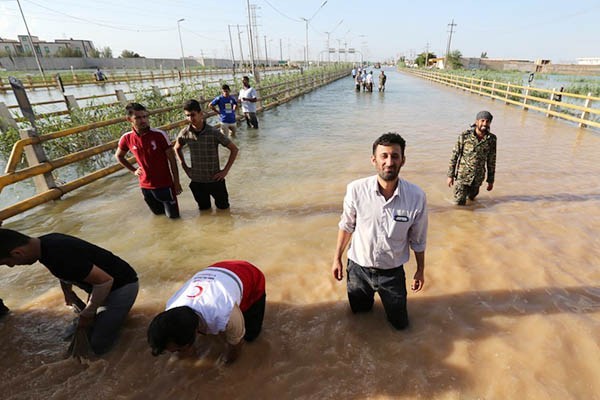Following the heavy rains and flash floods that have devastated Iran since late March, the United Arab Emirates (UAE) and Saudi Arabia have launched a joint effort to provide Iran with 95 tonnes of humanitarian aid. The aid was delivered under a directive from the Emirati President, Sheikh Khalifa bin Zayed bin Sultan Al Nahyan. A delegation from the Emirates Red Crescent (ERC) accompanied a relief aircraft delivering large quantities of food, tents and shelter materials. While it is a noble gesture, the recent tensions between the countries actually make it quite surprising. Iran and Saudi Arabia are opposing religious and political powerhouses in the Middle East, with the civil wars in Yemen, Syria and Iraq effectively seen as proxy wars between the two countries.
Since 1979, the main source of conflict between Iran, the UAE and Saudi Arabia has been their religious differences. Saudi Arabia is home predominantly to adherents of the Sunni branch of Islam, while Iran is predominantly Shia. While both are Muslim sects, there are fundamental theological differences between them. The Sunni-Shia conflict is a major element of friction throughout the Middle East and, with Saudi Arabia and Iran having the largest populations of each group, they are at the centre of the conflict.
Relations between Iran and Saudi Arabia have been strained over many geopolitical issues throughout the last few decades. In 2016, diplomatic ties were severed by Riyadh, following an attack on the Saudi embassy in Tehran, in response to the execution of Shia preacher Nimr al-Nimr by the Saudi authorities. Tensions have continued to bubble since then, but, in August 2018, Iranian Foreign Minister Mohammad Javad Zarif expressed Iran’s desire to restore relations with Saudi Arabia and the UAE. Little has been accomplished since that statement, but this aid effort is perhaps a sign that Saudi Arabia and the UAE desire a similar outcome.
Read the report by Conor Fowler in FutureDirections International.

